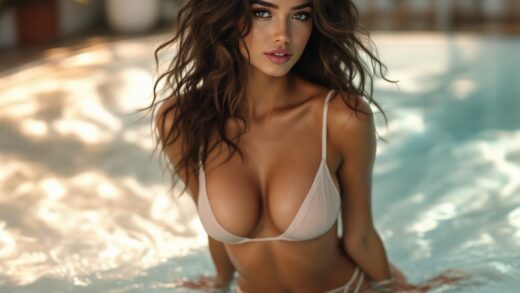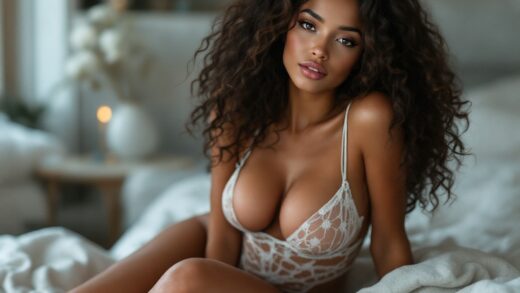As artificial intelligence steadily advances, its effects resonate throughout a variety of creative domains, especially within the world of erotic art. This convergence sparks distinct inquiries regarding the dynamics of gender portrayal in a genre steeped in complexity. Although AI aids in crafting visual stories that contest societal conventions, the foundational algorithms frequently mirror entrenched biases influenced by historical factors. Thus, delving into the role of gender in the creation and reception of AI-generated erotic art transforms into a significant cultural exploration, serving as a vital investigation of ethics and representation. This dialogue unfolds against a backdrop of shifting technologies, evolving audiences, and artistic expressions that constantly redefine limits and encourage discussion. Grasping this intricate relationship not only enriches our appreciation for this art form but also compels us to confront our perceptions surrounding gender and desire.
Deciphering Gender Representation in Art
Artistically, history paints a portrait of society, often unveiling the intrinsic power and gender dynamics at play. Conventional art forms have historically tilted towards male viewpoints, depicting women in ways that frequently reinforce clichés and objectification. However, as societal standards have progressed, the artistic community has been urged to evolve and broaden its depictions of gender. It transcends mere inclusivity; it’s about the intricate portrayal of sexuality and identity that resonates across diverse demographics and experiences. The contemporary landscape of erotic art, especially that created through AI, offers a new stage to investigate these gender dynamics. Here, technological advancements enlarge the spectrum of possibilities, enabling artists to challenge conventions and redefine standards.

The Impact of Gender on AI Algorithms
AI algorithms are trained on extensive datasets, which often echo the biases and preferences of their curators. This can lead to significant repercussions concerning gender representation in art. Training data may predominantly feature male-centric viewpoints, inherently influencing the outputs in ways that favor those perspectives. Additionally, the biases of the artists and creators developing these algorithms can shape how gender is depicted. This cycle perpetuates stereotypes but also creates opportunities for intentional intervention and transformation. By acknowledging the influence of creators, we can pave the way for more equitable portrayals in AI art.
| Type of Gender Bias | Result in AI Art |
|---|---|
| Underrepresentation | Limited female viewpoints, perpetuating stereotypes. |
| Overrepresentation of Sexualized Female Figures | Reinforcement of patriarchal narratives. |
| Neutral Representation | Potential for diverse narratives and inclusivity. |
Audience Reception: Gender and Perception
Gender significantly shapes how viewers perceive AI-generated erotic art, affecting both interpretations and emotional reactions. Research suggests that demographic factors play a substantial role in these experiences. For example, studies indicate that men and women may have differing responses to the same piece of art, influenced by their socio-cultural understanding of gender and desire. Additionally, societal expectations can filter how audiences decode an artwork’s intent, often tinting their views and critiques. Variations in audience reception can create polarized perspectives regarding the worth and significance of the artwork, complicating the conversation around AI in the artistic realm. It becomes essential, therefore, to delve into these varied interpretations to cultivate a more comprehensive appreciation of AI-generated erotic art.

Ethical Considerations in AI Erotica
As creators push the envelope of AI-generated erotic content, numerous ethical dilemmas concerning gender representation surface. Matters surrounding consent, ownership, and authorship provoke crucial discussions that need attention. There exists a pressing need to scrutinize how consent is viewed in AI art, especially when generated content may utilize likenesses without authorization. Moreover, gendered perspectives on ownership challenge traditional concepts of authorship, raising questions about who genuinely ‘creates’ in instances where machines are integrated into the artistic process. This dialogue is vital as it aids in understanding the dual nature of AI-generated erotic art as both a possibility for empowerment and a potential avenue for exploitation.
The Future of Gender in AI-Generated Erotic Art
As we look to the future, the realm of gender representation in AI-generated erotic art presents a landscape brimming with possibilities for exploration and growth. As consciousness surrounding gender issues continues to seep into various arenas, it becomes essential for the field of AI art to adopt inclusive approaches. This transition can result not only in more varied representations but also in innovative expressive forms that resonate with wider audiences. By incorporating diverse datasets and encouraging varied creator participation, we will gradually foster more balanced depictions. Ultimately, this evolution holds the promise of a richer, more colorful exploration of intimacy, desire, and identity within the digital sphere. The AI art realm is thus primed to challenge prevailing narratives and amplify new voices.
Conclusion
The intersection of gender and AI-generated erotic art unveils a complicated tapestry interwoven with historical, ethical, and social implications. As this captivating genre develops, it probes us to reevaluate our perceptions of gender, desire, and creativity. Through acknowledging the biases present in AI algorithms and the cultural narratives they propagate, we can strive towards nurturing a more inclusive and resonant art form. This awareness equips both artists and audiences to engage in meaningful discourse concerning identity, representation, and the manner in which AI can mirror society. The road ahead urges us to contemplate not only what AI might conjure, but also whom it symbolizes and how risks and responsibilities are navigated within this shifting artistic terrain.
FAQ
- What is AI-generated erotic art? AI-generated erotic art encompasses sexually explicit creative content produced through artificial intelligence algorithms.
- How does gender influence AI-generated art? Gender affects both the datasets employed to train AI and how audiences interpret and respond to the resulting artwork.
- Are there ethical considerations associated with gender in AI art? Absolutely, ethical issues include matters of consent, representation, and the risk of perpetuating stereotypes.
- How can gender bias in AI be tackled? By guaranteeing diverse datasets, encompassing a variety of creators, and continually evaluating the language and imagery that AI generates.
- What does the future hold for gender representation in AI-generated art? The future promises increasingly nuanced and inclusive portrayals as awareness of gender issues within technology continues to broaden.
“`



